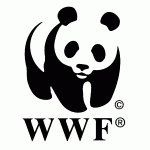Mangrove forests, seagrass meadows, saltwater marshes – these and other ‘blue forests’ are vital to coastal and island communities around the world

Would you like to develop a blue carbon project?
Are you interested in harnessing nature-based solutions?
Would you like to improve coastal ecosystem management?

The Blue Forests Solutions website has been developed by the United Nations Environment Programme (UNEP), the Global Environment Facility (GEF) and Blue Forests Project partners to provide tools and guidance at multiple scales – from local communities to national governments – on how to harness blue carbon and other ecosystem benefits and services that support sustainable outcomes.
Divided into four topic areas – Ecosystems, Economy, Policy and Communities – this toolkit draws upon examples from case study locations and provides resources to answer key questions on how to improve ecosystem management and support sustainable livelihoods while mitigating for climate change.
Blue Forests Solutions is a launching point for developing coastal sustainability opportunities, projects, and policies that recognize the natural values and ecosystem benefits that coastal and marine ecosystems provide.


What are the goals of a blue forests initiative?
What are the pathways for implementing
nature-based solutions?
Coastal and marine ecosystems can sequester carbon and support a multitude of ecosystem services and co-benefits vital to the livelihoods of millions of people. These blue forests' values can be measured and harnessed in projects and policies that support sustainable outcomes.
The blue forests economy includes options for implanting nature-based economic activities, including community-based blue carbon finance and conservation agreements. When healthy and sustainably managed, blue forests can provide alternative and supplemental sources of income for communities.
Best practices that support healthy blue forests include a range of sustainable policy, management, and planning activities. These policy options can reduce emissions from conversion and degradation and conserve and sustainably manage blue forests coastal carbon sinks.
In order to sustainably manage blue forests, it is vital that communities are engaged, informed, and empowered. The inclusion of safeguards and equity considerations can support long-term project and policy outcomes.


What benefits can a blue forests initiative provide?
This website is brought to you by the UNEP / GEF Blue Forests Project partners below. Website produced by GRID-Arendal, Silvestrum Climate Associates, Université de Bretagne Occidentale (UBO), and the International Union for the Conservation of Nature (IUCN).





























